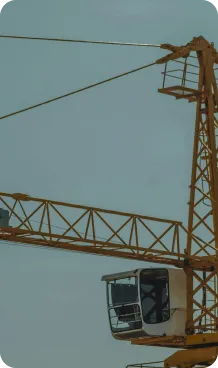When it comes to mining and heavy construction, the right equipment is crucial f...
Road Building Essentials: The Roller

Originating as a fundamental agricultural tool, the roller was initially powered by animals like horses and oxen, primarily used to flatten land and break up large soil clumps after plowing or disc harrowing. This simplicity laid the foundation for what would become a cornerstone in modern road construction. Today, these machines have evolved into complex, mechanized giants, essential for creating smooth, compact surfaces in road building and other construction projects.
Understanding the Mechanism of Modern Rollers
The primary function of drum rollers, vibratory soil compactors, or plainly, road rollers is to compact and level surfaces, including soil, gravel, and asphalt, preparing them for construction or agricultural use. Different weights and designs are used for various purposes. Some rollers, for instance, have heavy steel cylinders, or drums, while others might contain water, allowing for adjustable weight – a handy feature in diverse construction scenarios.
Main Types of Rollers
1. Single Drum Rollers
These rollers, featuring a large drum at the front and tires at the rear, excel in maneuverability and are excellent at traversing rough surfaces. The versatility of single drum rollers makes them suitable for a wide range of construction projects, from leveling grounds for sidewalks to compacting the topsoil before laying highways. They're particularly effective in preparing surfaces before constructing buildings, structures, or sports fields as well.

2. Double Drum Roller
Also known as tandem rollers, these have two large drums, front and rear, enabling them to compact surfaces ahead and behind simultaneously. This design grants them greater efficiency and power, especially in heavy asphalt applications like highway paving. Their dual-drum design covers twice the area in a single pass, significantly speeding up project completion.

3. Pneumatic Tyre Rollers (PTRs)
PTRs are similar to tandem rollers in that they can also operate in both forward and reverse directions. The difference is, however, that PTRs aren’t equipped with rigid drums, they rather have four rubber tyres front and rear. These rubber tires cover approximately 80% of the surface area, ensuring even pressure distribution across the compaction width. Pneumatic tyre rollers are commonly used to finish freshly laid and compacted asphalt. Additionally, they are highly suitable for use with cold-laid bituminous surfaces or cold-mixed pavements, as well as for compacting layers of loose soil.

4. Ride-On Tandem Rollers
Sometimes referred to as “babyrollers”, these ride-on rollers are miniature double-drum rollers, as they are designed to do the same job, but at a smaller rate. Babyrollers excel at compacting soil or finishing asphalt in narrower spaces, such as parkways, driveways, or even utility trenches.

5. Walk-Behind Rollers
This type of roller is the lightest in this category. Walk-behind rollers are even more compact than baby-rollers and much more lightweight. They are ideally used in compacting small patches of land, especially when preparing the site for laying utility lines or landscaping.

Selecting the Right Road Roller for Your Project
Choosing between any type of roller depends on several factors:
- Project Scope
Large-scale projects like highway paving, which require efficiency and speed, are best served by heavyweight single and double drum rollers. Their ability to flatten heavy objects like subgrade and subbase layers on roads is unparalleled.
- Terrain Type and Space Constraints
Single drum rollers, with their large size and huge rear tires offer excellent traction, and are ideal for projects requiring extra mobility and power. They are usually the first compaction machines to enter the site to prepare it after being dozed and graded.

- Surface Type and Compaction Depth
Each project has unique requirements regarding the type of surface and the desired compaction depth. The width and power of the drum roller must be chosen accordingly to ensure optimal compaction.
Advantages of Renting over Buying
For many projects, renting heavy equipment can be more cost-effective and flexible than purchasing machines outright. Renting allows for selecting the most suitable machine for each job without a long-term commitment. Maintenance and repair costs are typically covered by the rental company, ensuring that the equipment is always in top working condition.
At Al Marwan Heavy Machinery, we offer a diverse range of rollers to meet every construction need. Whether you're tackling a large-scale road building project or a more nuanced task requiring precision, our collection of drum rollers is tailored to fit. We understand the critical role these machines play in construction, and we are committed to providing high-quality, reliable equipment. Click here to view our full lineup of rollers and find the ideal match for your next project.
LEARN FROM OUR INDUSTRY EXPERTS
Latest news & updates

Essential Mining Equipment by Al Marwan Machinery

Saudi National Day 2024: The Path to Saudi Vision 2030
As Saudi Arabia celebrates its 94th National Day in 2024, the nation stands at a...

Eco-Friendly Concrete Equipment: Energya Series by CIFA
In the ever-evolving world of construction, innovation is the cornerstone of pro...

Al Marwan Partners Sinoboom for Advanced Man Lifting Equipment
Al Marwan is always focused on offering reliable heavy machinery for sale and eq...

9 Construction Machines Powering Modern Agriculture
Agricultural duties may seem far removed from the world of construction, but as ...
